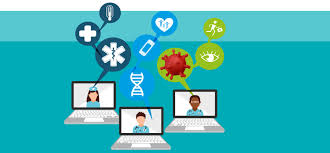It’s a common refrain in senior living that today’s assisted living communities are closer to yesterday’s skilled nursing facilities.
You are here
Will telehealth momentum help the oldest adults during Covid-19?
 What happens when people avoid health-related in-person care? Nearly a third of older adults, according to a National Council on Aging post, are foregoing visits to emergency rooms, afraid of catching the virus. Or they are avoiding outpatient visits, afraid of Covid-19, but also concerned about cost of care. And the cumulative number of lost visits since mid-March continues to grow. Family concerns about health and Covid-19 also continue to delay or prevent some move-ins to senior living communities. Presumably, some avoidance is occurring even in circumstances where there is a pressing need for a move, such as worsening dementia. But is telehealth viable for the oldest?
What happens when people avoid health-related in-person care? Nearly a third of older adults, according to a National Council on Aging post, are foregoing visits to emergency rooms, afraid of catching the virus. Or they are avoiding outpatient visits, afraid of Covid-19, but also concerned about cost of care. And the cumulative number of lost visits since mid-March continues to grow. Family concerns about health and Covid-19 also continue to delay or prevent some move-ins to senior living communities. Presumably, some avoidance is occurring even in circumstances where there is a pressing need for a move, such as worsening dementia. But is telehealth viable for the oldest?
Do the oldest have Broadband access? Although a telehealth visit can be held via a phone call or FaceTime today, eventually its use will require more secure tools and thus will likely will require broadband access or a smartphone. According to Pew Research’s 2019 survey, 59% of the 65+ have broadband in the home. This probably includes the 31% of the 65+ who were surveyed in April and said that access to the Internet was essential. And as one article noted, the higher surveyed number accessing the Internet (67%) includes those who do so from a library or senior center – and most of those in the US are currently closed. One of the prerequisites for having broadband at home is the ability to pay the approximate $60/month to access it. And whle some say no, that's too high, broadband access can be really cheap, as little as $10/month, likely that is dependent on location and the Internet provider.
Do the oldest have the devices that enable FaceTime or other Internet-based connections? According to AARP’s 2020 report, 62% of those age 70+ have smartphones -- that's more than have broadband in the home. The average price of a smartphone today has ‘fallen’ to $503, and there are those (possibly including the vendors themselves) that say smartphones have become too expensive, with only 10% of the population willing to spend $1000 or more. But when they say vendors are changing strategies, they mean that new phones can be bought for $750. Unless the population aged 75+ is working (fewer than 10% are during better times) or has substantial savings, the $750 phone will be out of reach.
Who is training or helping the oldest benefit from telehealth? So let’s say the oldest live in a household where there is a computer or smartphone and also knowledge of how to use these for a telehealth visit. Or they live where someone is motivated to help them do so, perhaps a family member, staff in senior housing or a nursing home, or perhaps a home care or home health worker. But what if they don't? Let’s assume that for now, AARP has halted its regional training (18 locations) and the OATS center-based training is temporarily halted. There are few other options (like this public health degree website) to help those who lack tech skills. For those who are online, a guide from AARP includes the reasons why telehealth matters, especially now. Otherwise the oldest are on the wrong side of the telehealth and digital divide. Rant off.
[NOTE: This is the 4th blog post in the series -- the Future of Remote Care Technology and Older Adults 2020, a report to be published in Q4 2020]

Comments
From Rik Warren via LinkedIn
Before the Covid PHE our RPM platform users average age was in the high 80s. Seniors were gamifying the elements which they were measuring. Steps; Calories; Blood Pressure became a central point of community discussion. Better results as well.